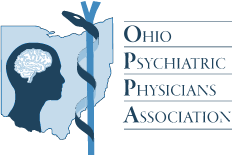Complete Story
06/26/2020
COVID-19 Mental Health Resource Hub, a free resource to help people address mental health needs during COVID-19.
A free resource to help people address mental health needs during COVID-19
The Epidemic within the Pandemic
Co-Authored by Jack Sherman, President of NAMI Ohio and Steve Martenet, President, Anthem BCBS in Ohio
As we’ve flattened the COVID-19 curve in Ohio, we’ve seen disturbing spikes in suicide, depression, substance use disorder, anxiety and other behavioral health concerns. On top of social isolation and more difficult access to our normal support systems, the tragic death of George Floyd and long-overdue public attention to social injustice issues have created a perfect storm of challenges to mental health. It’s being called the epidemic within the pandemic, a perfect description of the situation we face.
The National Alliance of Mental Illness of Ohio, Anthem Blue Cross and Blue Shield in Ohio and its Foundation are working together to spotlight these mental health challenges and connect Ohioans to help. One focus of this partnership is NAMI’s “You Are Not Alone” campaign, a national effort to help individuals, organizations and local governments collect and share stories and messages about how inequality, COVID-19, financial insecurity and other stressors impact on our mental health. More information is available at www.NAMI.org/MentalHealthMonth.
PsychHub, Anthem, NAMI and others have also joined forces to offer the COVID-19 Mental Health Resource Hub, a free resource to help people address mental health needs during COVID-19. Visit https://psychhub.com/covid-19/.
Mental Health Awareness Month was in May, but these issues need year-long attention. The good news is that resources do exist and help is available. And, there may even be silver linings among these storm clouds.
Depression and Anxiety
Nearly half of Americans have reported that the coronavirus crisis has been harmful to their mental health, according to a Kaiser Family Foundation poll. Certainly, social injustice and inequity are ongoing sources of anxiety for too many Americans. The good news is that rapidly expanded telehealth services have helped meet the needs of individuals seeking help and most Ohio mental healthcare providers are now offering this service.
But an awareness gap remains and people need help getting connected to resources. The Ohio Department of Health has posted information about coping with anxiety and depression on their website at coronavirus.ohio.gov. Ohioans can also connect to trained crisis counselors 24 hours a day at the Ohio Crisis Text Line by texting keyword 4HOPE to 741741. They can also contact the Ohio Mental Health and Addiction Services Help Line at (877) 275-6364.
Substance Use Disorder
Ohio’s opioid crisis was burning long before recent events threw fuel on the fire. The issue and all forms of substance use disorder have been a top priority for Gov. DeWine, mental health providers, insurers and all Ohioans for years. After years of hard work recognizing SUD as a disease and not a personal weakness, expanding treatment options, curbing prescription drug abuse, and raising awareness, we’d just begun to turn the tide when the past few months presented entirely new barriers for people struggling with substance use disorder.
The Ohio Citizen Advocates for Addiction Recovery organization continues to offer recovery resources, including virtual support meetings for all Ohioans during the pandemic. More information about their services can be found at www.oca-ohio.org.
Suicide
For 20 years, suicide rates have been rising in the U.S., reaching a post-World War II peak just before the pandemic hit. While COVID-19’s full impact on suicide rates remains unknown, we do know that the stressors people are currently experiencing drive suicide numbers up, as housing insecurity, social injustice and unemployment have historically driven higher rates.
For those seeking immediate support, NAMI Ohio offers a county-by-county list of crisis hotlines in Ohio available on their website at https://namiohio.org/wp-content/uploads/2020/03/Community-Help-and-Crisis-Lines-Updated.pdf.
The Ohio Suicide Prevention Foundation hosts a network of suicide prevention coalitions across Ohio and they are available to assist anyone in finding resources to ensure their safety. https://www.ohiospf.org/
Silver Linings
There’s no doubt that 2020’s challenges will drive needed change for the future of mental healthcare in Ohio. Perhaps most promising is the fact that mental health is finally taking its place alongside physical health as an equal and intertwined component of our well-being. Use of new technology like telehealth is vastly improving access to behavioral healthcare and overcoming social, economic and transportation barriers. Employers of all sizes are devoting new levels of resources to addressing mental health among their workforce. These hard-earned lessons will not be forgotten and will serve us well long after COVID-19 ebbs and as we continue our journey toward equality.
In the meantime, keep checking on your friends, coworkers and neighbors, and help us spread the word that mental health resources are available in Ohio. It’s never been more important.

